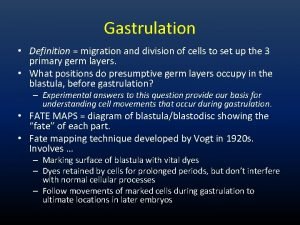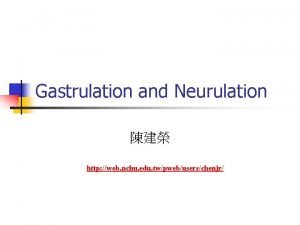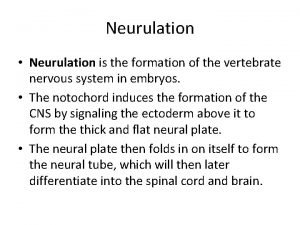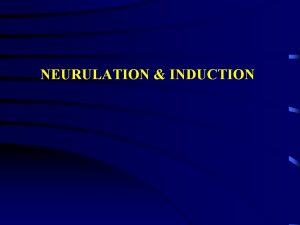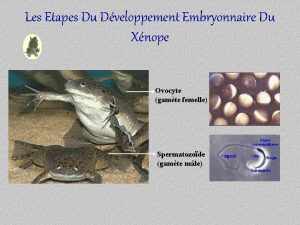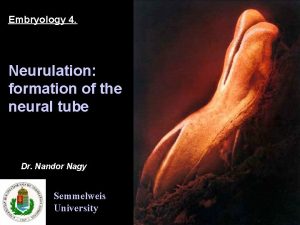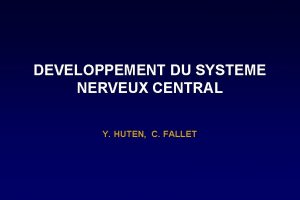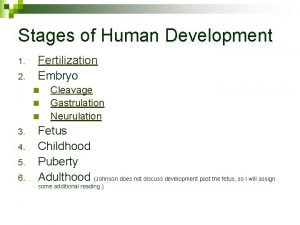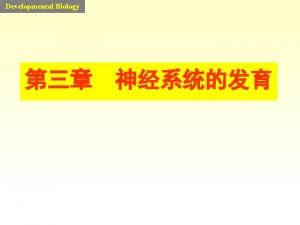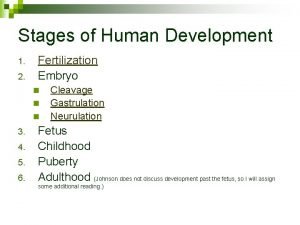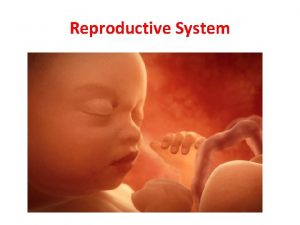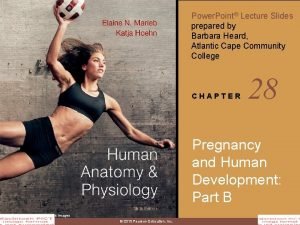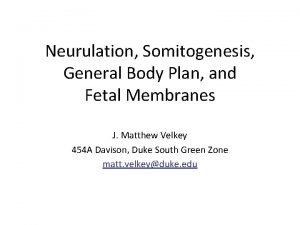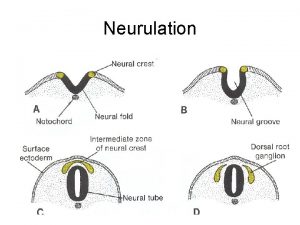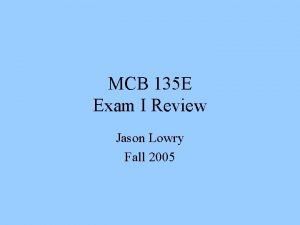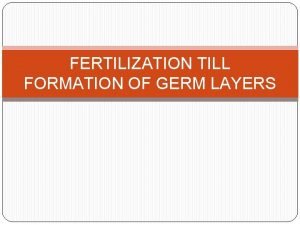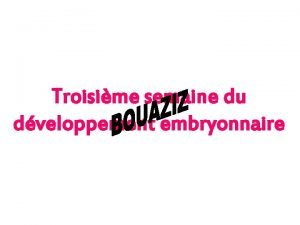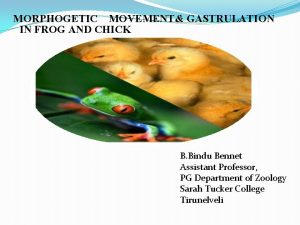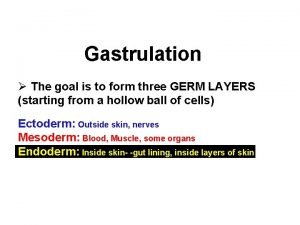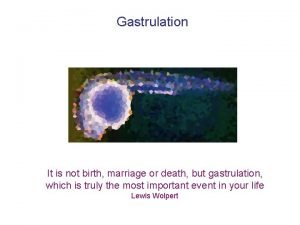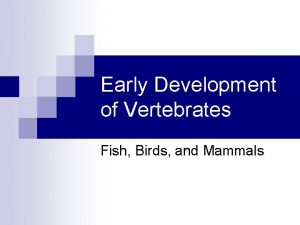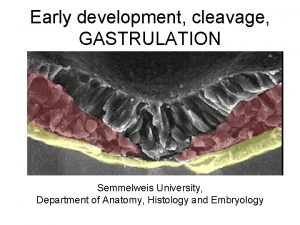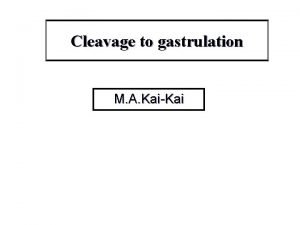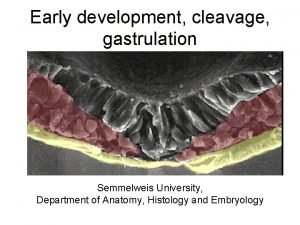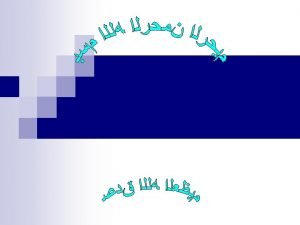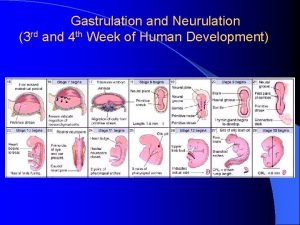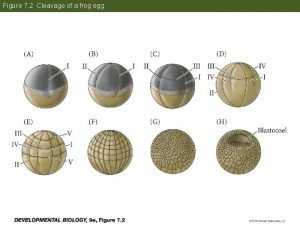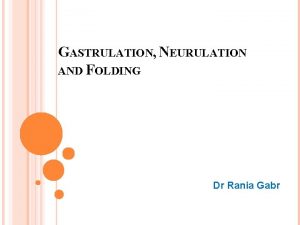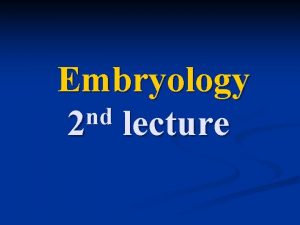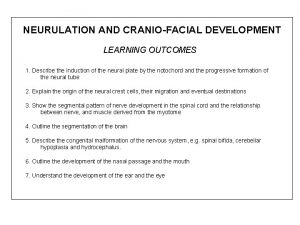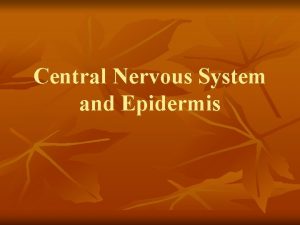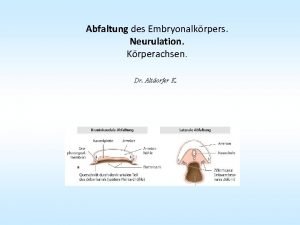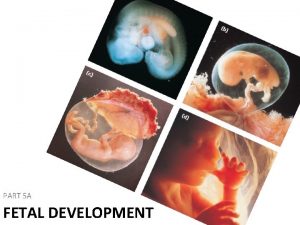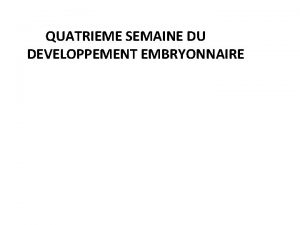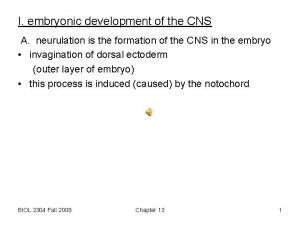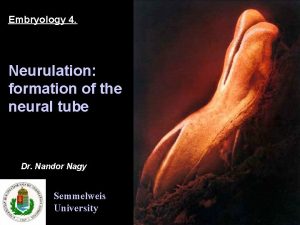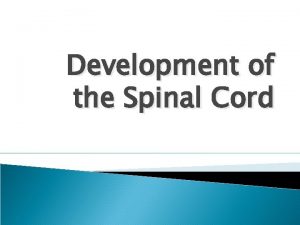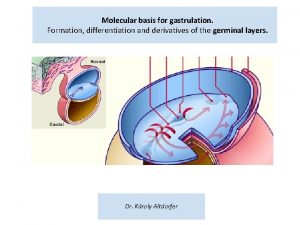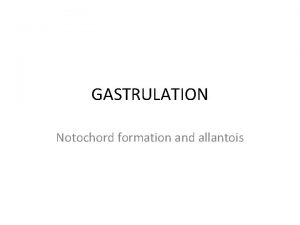Gastrulation and Neurulation 3 rd and 4 th




























- Slides: 28

Gastrulation and Neurulation (3 rd and 4 th Week of Human Development)

Gametogenesis of Germ Cells in the Male and Female


Summary of the Ovarian Cycle, Fertilization and Human Development during the First Week

Cleavage and Implantation http: //www. pbs. org/wgbh/nova /miracle/program. html

Implantation of the Blastocyst (Day 7)

By 9 Days, the Embryo is Completely Implanted in the Uterine Endometrium

Days 10 -13 of Embryonic Development

Day 15 of Embryonic Development

Implantation: Days 7 -14 Days 7 -9 Days 12 -14 Days 10 -12

View of the Germ Disc at the End of the Second Week of Development

Gastrulation: Formation of Embryonic Mesoderm and Endoderm

Paths of Migration of the Ingressing Mesoderm

Formation of Notochordal Process

Differentiation of Mesoderm Paraxial mesoderm Axial skeleton Voluntary muscles Intermediate mesoderm Urinary system Part of the genital system Lateral plate mesoderm Parts of the limbs Most of the dermis

Formation of Somites from Paraxial Mesoderm 1 -7 Somitomeres give rise to the striated muscles of the face, jaw and throat Remaining 30 give rise to axial skeleton and voluntary muscles of the neck, body wall and limbs.

Gastrulation http: //www. pbs. org/wgbh/nova /miracle/program. html

Onset of Neurulation

Neurulation: Formation of the Neural Tube

Closure of the Neural Tube (Day 22)

Closure of the Neural Tube proceeds Bilaterally

Malformations of Neural Tube Closure (1 in 600 births)

Types of Spina Bifida

Neurulation: Formation of the Neural Tube

Neural Crest Derivatives

Review Events of Third Week Gastrulation, Formation of Trilaminar Disc and Initial Development of the Somites and Neural Tube Events of Fourth Week Differentiation of the Somites and the Nervous System

Remnants of the Primitive Streak may Persist and give rise to a Sacrococcygeal Teratoma (1 in 35, 000 newborns)

Derivatives of the Three Germ Cell Layers Endoderm Derivatives Epithelium of GI tract and its associated glands as well as glandular cells of the liver and pancreas Epithelium of the urachus and urinary bladder Epithelium of respiratory passages; the pharynx, trachea, bronchi, and alveoli. Epithelial parts of the tonsils, thyroid, parathyroids, tympanic cavity, thymus Epithelial parts of anterior pituitary Mesoderm Derivatives Cardiovascular system Cells of lymphatic system, spleen, adrenal cortex Skeleton, Striated muscles and smooth muscle coats Dermis of skin Connective tissue and vessels associated with organs Urogenital system (gonads, ducts and accessory glands) Ectoderm Derivatives Epidermis of skin, nails, hair, sweat, mammary and, sebaceous glands CNS, PNS Retina and lens of eye Pupillary muscle of the iris (*this is the only muscle of ectodermal origin) Pineal body, anterior and posterior pituitary, adrenal medulla, melanocytes, schwann cells, odontoblasts
 Neurulation
Neurulation Semaphore semmelweis
Semaphore semmelweis Primary vs secondary neurulation
Primary vs secondary neurulation Neurulation definition biology
Neurulation definition biology Stade morula
Stade morula Neuroporus baby
Neuroporus baby Neurulation primaire
Neurulation primaire Neurulation
Neurulation Primary neurulation
Primary neurulation Neurulazione
Neurulazione Human fetus stages
Human fetus stages Neurulation
Neurulation Somite
Somite Paraxial mesoderm
Paraxial mesoderm Epitheliasation
Epitheliasation Neural groove
Neural groove Gastrulation
Gastrulation Gastrulation
Gastrulation Blastocoal
Blastocoal Gastrulation semaine
Gastrulation semaine Vegetal
Vegetal Cleavage of birds
Cleavage of birds Membrana buccopharyngea
Membrana buccopharyngea Meridional cleavage
Meridional cleavage Xenopus cleavage
Xenopus cleavage Prechordal plate
Prechordal plate Late morula stage
Late morula stage Gastrulation week
Gastrulation week Frog gastrulation
Frog gastrulation
